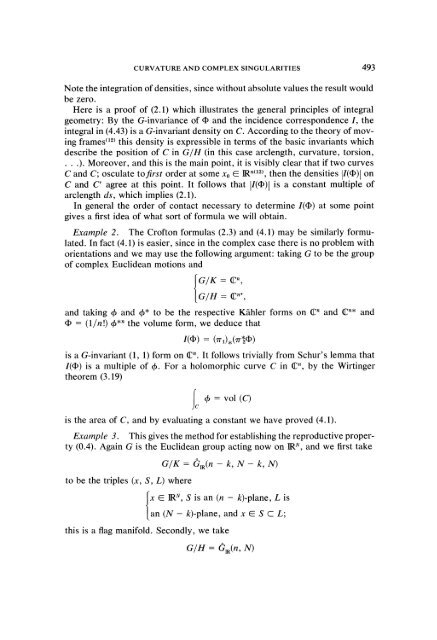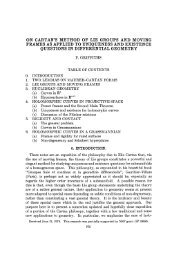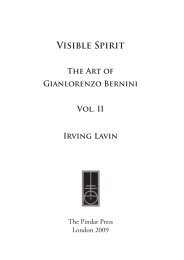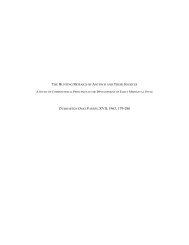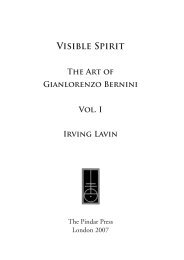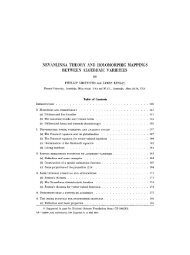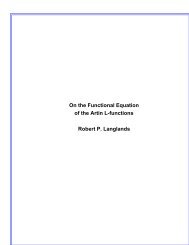View PDF - Project Euclid
View PDF - Project Euclid
View PDF - Project Euclid
Create successful ePaper yourself
Turn your PDF publications into a flip-book with our unique Google optimized e-Paper software.
CURVATURE AND COMPLEX SINGULARITIES 493<br />
Note the integration of densities, since without absolute values the result would<br />
be zero.<br />
Here is a proof of (2.1) which illustrates the general principles of integral<br />
geometry: By the G-invariance of and the incidence correspondence I, the<br />
integral in (4.43) is a G-invariant density on C. According to the theory of moving<br />
frames 12 this density is expressible in terms of the basic invariants which<br />
describe the position of C in G/H (in this case arclength, curvature, torsion,<br />
.). Moreover, and this is the main point, it is visibly clear that if two curves<br />
C and C; osculate tofirst order at some x0 IR"13, then the densities II()1 on<br />
C and C’ agree at this point. It follows that II()1 is a constant multiple of<br />
arclength ds, which implies (2.1).<br />
In general the order of contact necessary to determine I() at some point<br />
gives a first idea of what sort of formula we will obtain.<br />
Example 2. The Crofton formulas (2.3) and (4.1) may be similarly formulated.<br />
In fact (4.1) is easier, since in the complex case there is no problem with<br />
orientations and we may use the following argument: taking G to be the group<br />
of complex <strong>Euclid</strong>ean motions and<br />
G/K= I,,<br />
G/H "*,<br />
and taking b and 4* to be the respective K/ihler forms on tI;" and "* and<br />
(I/n!) 4*" the volume form, we deduce that<br />
I() (rl).(r*)<br />
is a G-invariant (1, 1) form on (I;n. It follows trivially from Schur’s lemma that<br />
I() is a multiple of 4). For a holomorphic curve C in n, by the Wirtinger<br />
theorem (3.19)<br />
d<br />
vol (C)<br />
is the area of C, and by evaluating a constant we have proved (4.1).<br />
Example 3. This gives the method for establishing the reproductive property<br />
(0.4). Again G is the <strong>Euclid</strong>ean group acting now on IRN, and we first take<br />
to be the triples (x, S, L) where<br />
G/K Ouc(n k, N k, N)<br />
x IRN, S is an (n k)-plane, L is<br />
an (N- k)-plane, and x S c L;<br />
this is a flag manifold. Secondly, we take<br />
G/H (n(n, N)


